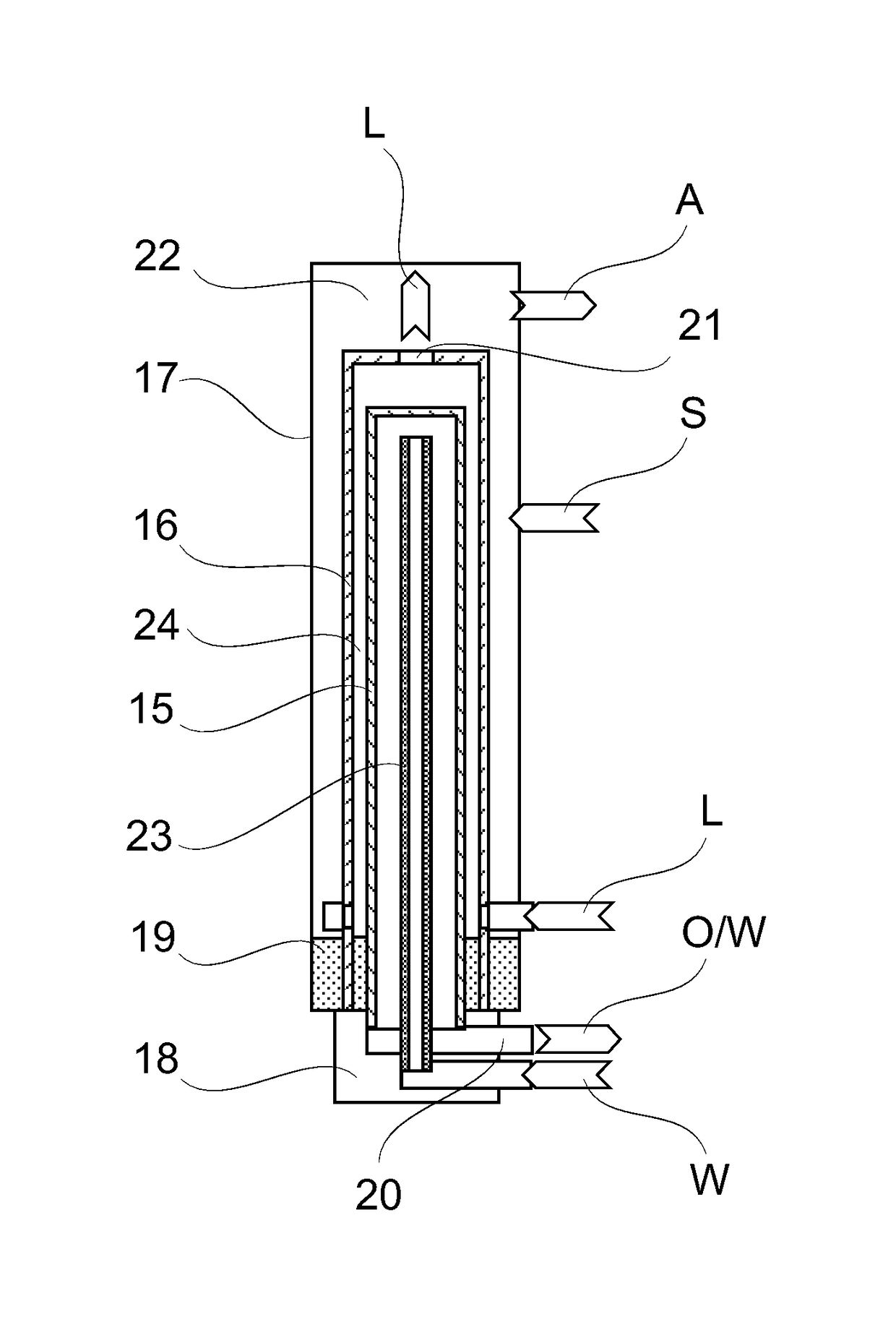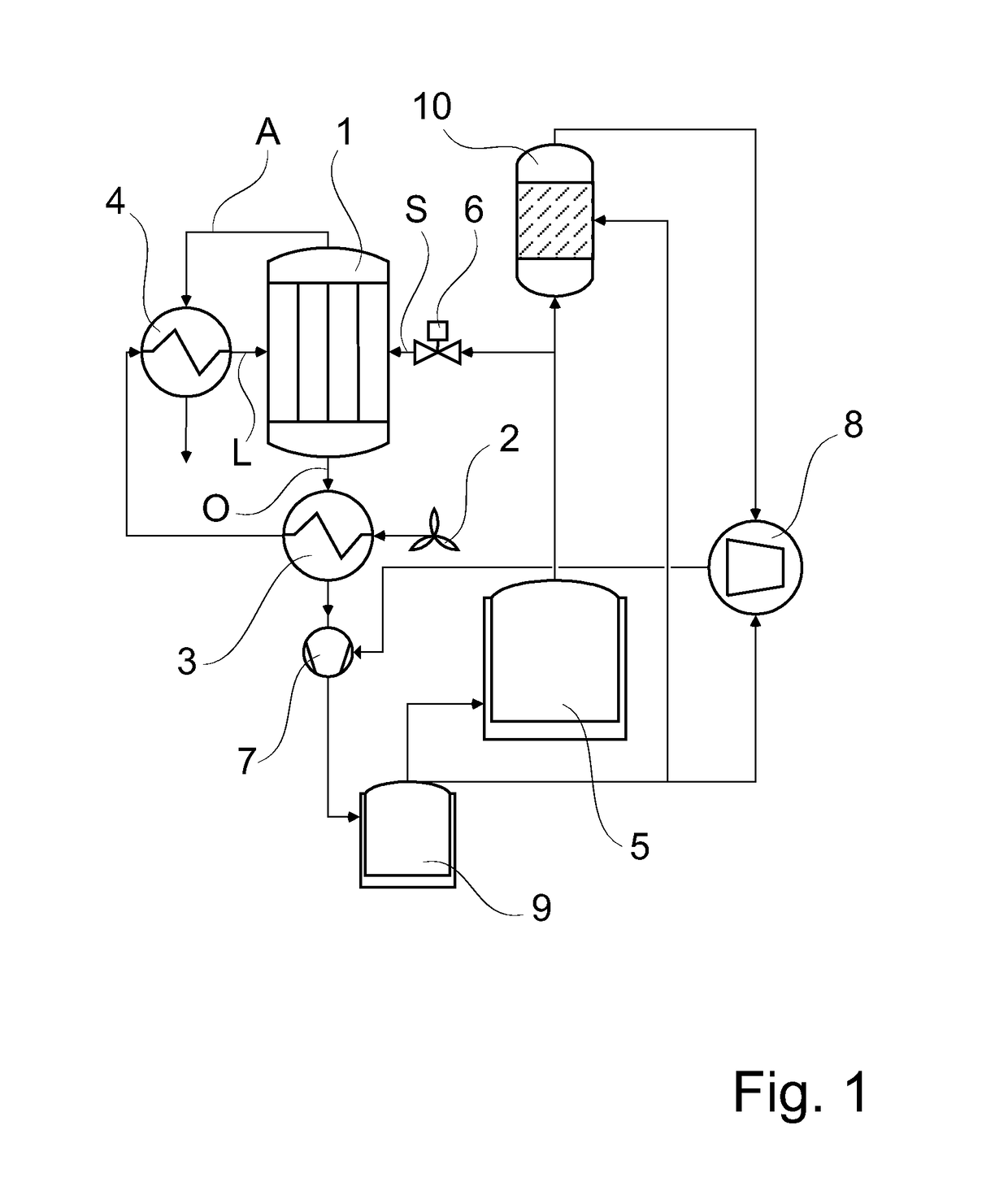Method and membrane module for the energy-efficient oxygen generation during biomass gasification
- Summary
- Abstract
- Description
- Claims
- Application Information
AI Technical Summary
Benefits of technology
Problems solved by technology
Method used
Image
Examples
Embodiment Construction
[0027]FIG. 1 shows an integrated oxygen generation in the biomass gasification through vacuum suction of an oxygen membrane module which is directly heated by synthesis gas and has a minimized electrical power requirement, including the essential components thereof.
[0028]The membrane module 1 for oxygen generation in the biomass gasification is outfitted with 2500 BSCF (Ba0.5Sr0.5Co0.8Fe0.2O3-δ) membrane tubes with a length of 700 mm. The BSCF membrane tubes which are closed on one side have an outer diameter of 3.2 mm and an inner diameter of 2.6 mm and are inserted in a vacuum-tight manner into a vacuum-tight connection plate with silicon insertion seals. The membrane module 1 is supplied with fresh air L through a radial fan or centrifugal blower 2. The fresh air L is guided for cooling the generated oxygen O via a first heat exchanger 3 and is preheated by the exhaust gas A exiting from the membrane module 1 via a second heat exchanger 4. The required residual heat for reaching ...
PUM
 Login to View More
Login to View More Abstract
Description
Claims
Application Information
 Login to View More
Login to View More - R&D
- Intellectual Property
- Life Sciences
- Materials
- Tech Scout
- Unparalleled Data Quality
- Higher Quality Content
- 60% Fewer Hallucinations
Browse by: Latest US Patents, China's latest patents, Technical Efficacy Thesaurus, Application Domain, Technology Topic, Popular Technical Reports.
© 2025 PatSnap. All rights reserved.Legal|Privacy policy|Modern Slavery Act Transparency Statement|Sitemap|About US| Contact US: help@patsnap.com



